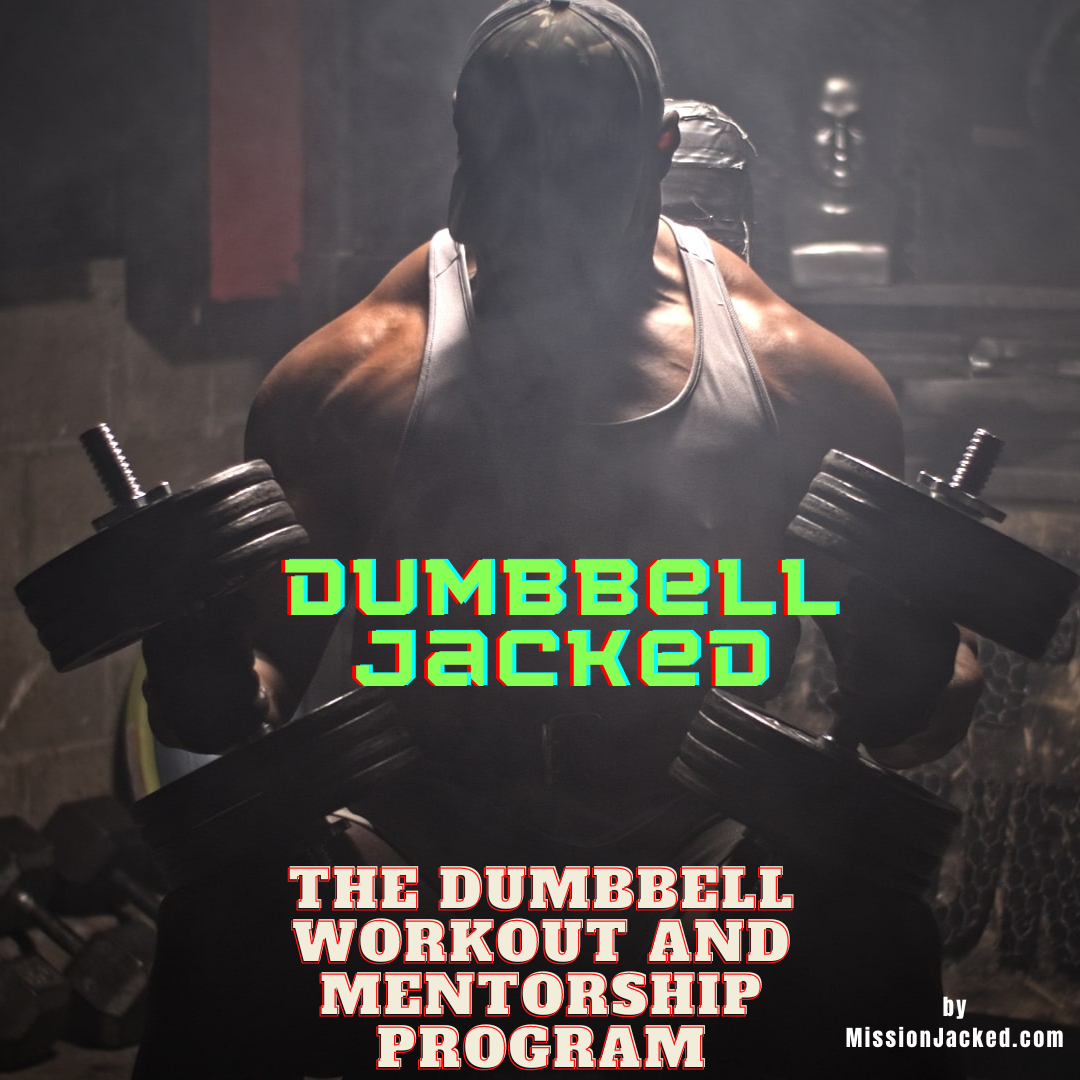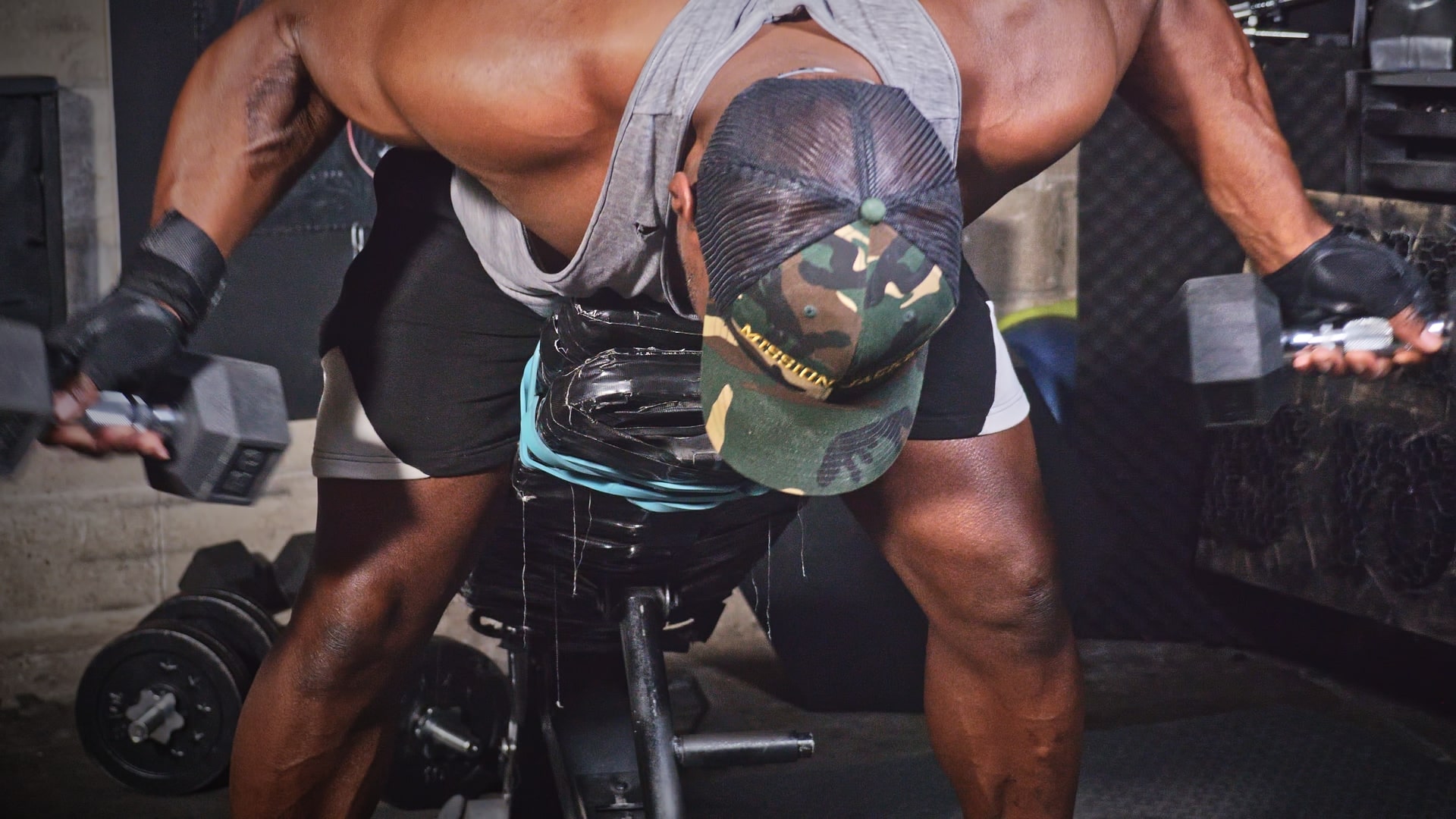Mission Jacked.com
Chest Supported Rear Delt Row:
A Rear Delt Dumbbell Exercise For Mass
The Delt Row Summary:
The Chest Supported Rear Delt Row is a great exercise, worth adding to your Deltoid mass-building workouts. You can do this exercise movement using dumbbells, a barbell, or Kettlebells. On first glance, this looks like a regular row exercise for the back, but as you perform the row following the cues below, you will quickly realize that this is an awesome delt row exercise worth its weight in gold.
Supported Dumbbell Row vs. Chest-Supported Rear Delt Row:
Similar in many ways to the Chest Supported Dumbbell Row exercise, the main difference between the two is the angle you row the weight. Even though the Chest Supported Row and Chest Supported Barbell Row involve the use of the rear deltoid and back muscles, the main objective of the Chest-supported row is to row the weight into the hip area to stimulate the Lats. With Rear Delt Rows, the idea is to row the weight in line with the shoulders to target the posterior deltoid muscle.
Whether you're bodybuilding, strength training, or exercising for general health and fitness, to get better posterior deltoid development, your regular rear delt workouts should consist of some form of dumbbell rear delt fly like a Seated Dumbbell Rear Fly, a face pull either with a cable or bands, and some rear delt row variations.
I'm Psymon H, your exercise coach, workout motivator and the man you call upon when you need more dumbbell exercises and workouts. In this article, I'm going to arm you with some dumbbell rear delt rows and tips for getting better results and improving your 3D appearance from the side and the rear.
Scroll Down To Continue Reading!
Related Rear-Delt Exercise Articles
Best Rear Delt Dumbbell Exercises For a Beefy Rearview Appeal
Use this Rear Delt Fly master class to grow 3D Deltoids - 6 huge variations to add to your exercise arsenal
Try This Rear Deltoid Dumbbell Workout For A Huge Size Advantage
The Best Dumbbell Shoulder Workout For Mass Monster Status
Everything You Need To Know About The Bent Over Rear Delt Fly + 5 Different Variations
Master 5 Versions of The Rear Delt Cable Fly For Stunning 3D Delts
Continue Reading This Rear-Delt Row Article
How to Do the Rear Delt Row Exercise (Neutral Grip):
 End Position
End PositionItems Needed:
For this exercise, you will need one pair of dumbbells and an incline bench. You may also want to secure a pad to the top of the bench with a resistance band for added comfort.
There are three considerations to make when setting up for any supported dumbbell row
1: The angle of the bench
2: The angle at which you row
3: Foot placement
The Angle of The Bench:
To control the exercise and maximize the stress on the rear-delt area, the incline of the bench matters. If it’s set too high, you may not be able to get over the bench and put yourself in the best position to maximize rear-delt involvement.
Cue 1: Set the bench between a 45 and 60-degree angle.
Foot Placement:
Where you have your feet can also influence this exercise. Most people have their feet placed on the floor behind the bench. This can make the movement a little more unstable.
Cue 2: With the dumbbells in hand, walk your feet up until they are virtually underneath your deltoids. This will give you more stability throughout the exercise movement.
The Angle at Which You Row:
Cue 3: Unlike a traditional Chest-supported row where the weight starts and finishes in line with your hips to stimulate the lats, we're going to start with the weight in line with your delts.
Cue 4: Turn your wrist so that your palms face each other and the weights are in-line with your shoulders (neutral grip).
Cue 5: Row by pulling your elbows up in line with your shoulders instead of rowing the weights back towards the hip area. At the top of the exercise movement, the weight should be at a right angle to your rear-delt. Pause briefly before returning to the start of the exercise.
Repeat for the desired amount of repetitions.
Mistakes to Avoid When Doing Dumbbell Rear Delt Rows:
1: If you set the bench up too high, it can make it harder to target the posterior area of the shoulders.
2: Rowing into the hips instead of rowing in line with the shoulders can place more stress on the latissimus dorsi muscle instead of the rear delts.
3: Not pulling the elbows up high enough. To target the muscles and get the most from these rear delt rows, aim to lift your elbows as high as possible.
The Rear Delt Row Grip & delt row variations:
 The Neutral Grip
The Neutral GripAdd These To Your Rear Delt Fly Exercise
You can use various grips when doing the Chest Supported Rear Delt Row exercise. The overhand (pronated grip) and neutral grip target the rear delts and upper back because the elbows are out and away from the body. The underhand grip (supinated grip) involves the lower Trapezius and rear delt muscles because it forces the elbows closer to the body.
The Barbell Rear Delt Row:
 Start Position
Start Position End Position
End PositionThe Barbell Rear Delt Row exercise is another row variation and an exercise that targets the rear delts. The difference between this and the above dumbbell exercise comes down to your hands being in a fixed position. You can alternate between the barbell and dumbbell versions on different workouts, or spend a workout cycle on one exercise before swapping exercises on the following cycle.
Items Needed: One barbell and plates and an incline bench set at a 45-degree incline.
Cue 1: Place the loaded barbell on the floor at the top of the bench. Straddle the bench and lay your body face down so your chest is supported.
Cue 2: Grab the bar with a pronated wide grip and keep the weight in line with your shoulders. Walk your feet up directly underneath your shoulders before you start the exercise.
Cue 3: Try to lift your elbows in line with your shoulders. Once your elbows are as high as you can go, briefly pause in this position before returning to the start of the exercise.
Repeat for the desired amount of repetitions.
Muscle Used During Dumbbell Rear Delt Rows:

The delt row exercise involves the rear deltoids and various muscles of the upper back including…
Trapezius
Rhomboid Minor
Rhomboid Major
Infraspinatus
Teres Minor
Teres Major
Levator Scapulae.
The Three Roles of The Rear Deltoid:
1: As it stems from the back-side of the body, it will extend the shoulder behind and hyperextend, pulling it behind the Back.
2: When the arms are in an abducted position, they will pull back in what is called transverse abduction.
3: The rear-delts wrap around the arms and insert on the lateral aspect, and will externally rotate the shoulder.
Do Dumbbell Rows Work Rear Delts?
Yes, Dumbbell Rows work the rear delts and muscles in the back because the elbows move above the line of the back.
Alternative For The Chest Supported Rear Delt Row:
 Start Position
Start Position End Position
End PositionA great alternative for the supported rear delt row is Incline Alpines
Because your rear delt muscles are hyper extenders of the shoulders, the lats and long head of the triceps bring the arms from an overhead position down to your side. The posterior delts help bring the arms from hanging down at your side position to extension behind the line of your body, similar to an alpine ski jumper in mid-flight.
You can target the rear-delt muscles using the same alpine ski jump exercise movement. Set up your bench at the same incline at a 45-60 degree incline.
Cue 1: Walk your way up the face of an incline bench with dumbbells in hand and lay over the top with your arms straight and directly underneath you.
Cue 2: Here, we're trying to keep the shoulder blades as still as possible, but instead aiming to move the humorous past the plane of the body. With your palms in a neutral position and arms straight, bring the dumbbells behind the line of the body.
Cue 3: Briefly hold this top position before returning the dumbbells to the start position.
We hope you found the Chest Supported Rear Delt Row tips helpful.
More Articles By Mission Jacked
Master True Dumbbell Lateral Raises and the 7 Variations to Develop King-Kong Side Delts
Have You Tried This Muscle Building Rear Delts Workout?
Shoulder Flys – Are Your Delts Getting The Most From This Exercise?
The 5 Best Rear Delt Exercises That You're Not Doing
Use the Incline Rear Delt Raise To Build Incredible 3D Delts
Use the Seated Face Pull for Stability, Growth and Bigger Lifts
Dumbbell Clean and Press Your Way To A Stronger and Fitter Physique
Mission Jacked L.L.C
Address: 9407 NE Vancouver Mall Dr
STE 104 #1269
Vancouver, WA 98662 USA
Email: mission@missionjacked.com




